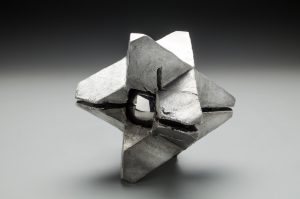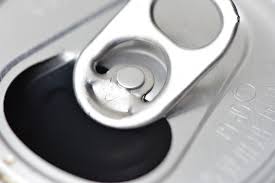
As an all-under-one-roof metal fabricator, stainless steel may make up the bulk of what we use to fabricate products, but aluminum plays an important part in our business as well. However, aluminum is quite different than stainless steel, and requires different processes and treatment in order to create a finished item that meets customer requirements.
What is aluminum?
If you are able to remember back to your high school chemistry class, you may recall that aluminum is an element (one sometimes spelled “aluminium,” for those on the other side of The Pond). It can be found on the periodic table as the symbol “Al.” Although it is the most common metal element in the earth’s crust, it doesn’t naturally occur “in the wild” as the metal we know.
Who discovered aluminum?
Aluminum is considered one of the newest metals to be discovered. Aluminum was given its name in 1808 by English chemist Humphry Davy who discovered that it could be produced by electrolytic reduction from alumina (aluminum oxide). Unfortunately for Davy, he was never able to reproduce his theory in practice. However, in 1825, aluminum was produced by Danish chemist Hans Christian Orsted, although it wasn’t isolated as an element until 1827, by Friedrich Wohler. It took Wohler another 18 years of work to be able to consistently produce small pieces of solidified aluminum, called “globules.”

How did aluminum gain popularity?
Once Wohler learned how to produce solidified aluminum, French chemist Henri-Etienne Sainte-Claire Deville improved upon the process and created the first industrial application of aluminum with his partners in 1856. Even then, however, aluminum was very expensive to produce, making it a metal used more for ornamentation than industrial purposes. This all changed 30 years later, when a more cost-efficient electrolytic production method — the Hall-Héroult process — was discovered in 1886.
The one downside of the Hall-Héroult method was the massive amounts of electricity required to make it work. Luckily, this issue was put to rest by Karl Joseph Bayer just three years later in 1889, when he invented an inexpensive process of making aluminum oxide (alumina), which became the new standard raw material for the production of aluminum.
Aluminum Fun Facts
Aluminum…
- …is one of the most abundant metallic elements in the Earth’s crust; it’s second only to silicon.
- …employs a LOT of people, including 29K in the U.S. alone
- …is plentiful. In 2014, the US. produced 1.72 million metric tons of primary aluminum, 1.7 million tons of secondary aluminum from used scrap (recyclables), and another 1.92 million tons from new scrap (usually that which is leftover post-fabrication and manufacturing of a part or product).
- ….production in the U.S. has declined over the last three decades, but it is mainly primary aluminum production that has decreased. A portion of that has been made up by the production of secondary aluminum, allowing for its reuse.
- …has a tendency to stick around, thanks to recycling. According to the Aluminum Association, it’s believed that up to 75% of the aluminum ever produced is still out there in some form or another.
- …is strong, but also quite light, and weighs ⅔ less than steel. In fact, just four six-packs of aluminum cans can support the weight of a two-ton vehicle.
- …in its powdered form, is one of the primary materials used to make fireworks.
- …contains properties that make it a fantastic barrier material, and is able to lock out a range of potential contaminants, from light and oxygen, to moisture and even bacteria.
- …is easily recycled, but only about 55% of aluminum cans never make it to a recycling center. This is a shame, because it takes 95% less energy to recycle it into secondary aluminum than it does to produce new, or primary, aluminum.
- …has an incredibly high rate of thermal conductivity. In fact, its rate of heat transfer is around six times higher than that of stainless steel.
- Aluminum can be recycled with no loss of its intrinsic qualities.
- Ever wonder what etch-a-sketches are drawing with? That’s aluminum powder!
About EVS Metal
EVS Metal is an American precision metal fabrication company headquartered in Riverdale, NJ. We utilize the latest technology to cut, bend, weld and finish stand-alone items as well as parts for integration or assembly into more complex products. Our four ISO 9001:2015-certified metal fabrication facilities comprise over 250,000 square feet of vertically integrated manufacturing space and feature the most modern equipment available, from welding robots and laser cutting solutions to automated powder coating lines.
We serve a diverse customer base across North America, providing a range of services from quick-turn prototypes to high-volume production runs. Request a personalized metal fabrication quote online, or call (973) 839-4432 to speak with a specialist today.





